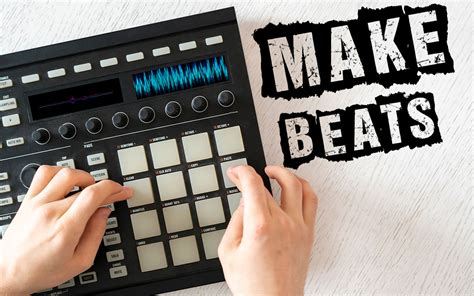How To Use A Beat Machine
Ronan Farrow
Mar 26, 2025 · 3 min read

Table of Contents
How to Use a Beat Machine: A Beginner's Guide to Music Production
So, you've got your hands on a beat machine – congratulations! Whether it's a digital audio workstation (DAW) software or a hardware sampler, the world of music production is now within your reach. This guide will walk you through the basics of using a beat machine, regardless of your experience level. Let's dive in!
Understanding Your Beat Machine
Before you start crafting killer beats, it's crucial to familiarize yourself with your chosen beat machine's interface. Every DAW and hardware sampler is different, but they all share fundamental components:
Key Components:
- Sequencer: This is the heart of your beat machine, allowing you to arrange and sequence your sounds over time. Think of it as a digital sheet of music.
- Sampler: This component lets you import and manipulate pre-recorded audio samples (like drum hits, melodies, or vocal snippets).
- Synthesizer (Synth): Many beat machines include synths, enabling you to create completely original sounds from scratch using oscillators, filters, and effects.
- Effects Processors: These add polish and character to your sounds, using tools like reverb, delay, compression, and EQ.
- Mixer: This section lets you control the volume and panning (left-right placement) of your individual sounds.
Getting Started: Your First Beat
Let's create a simple four-on-the-floor beat – a foundational element in many genres.
Step 1: Selecting Your Sounds
Start by choosing your drum sounds. Many beat machines offer a library of pre-loaded samples. Look for:
- Kick Drum: The low, punchy sound that provides the rhythmic foundation.
- Snare Drum: A sharper, more percussive sound that adds accent to the beat.
- Hi-Hats: These provide a rhythmic "shimmer" or "tick" throughout the beat. Closed hi-hats are short and crisp, while open hi-hats are longer and more resonant.
- Other Percussion: Experiment with additional elements like claps, cymbals, and toms to add texture and variation.
Step 2: Programming the Beat
Use the sequencer to arrange your drum sounds in a pattern. A typical four-on-the-floor beat might look like this:
- Kick Drum: On beats 1 and 3.
- Snare Drum: On beats 2 and 4.
- Hi-Hats: On every beat (or every eighth note for a more complex feel).
Step 3: Adding Effects and Mixing
Once you have a basic beat, experiment with effects to shape the sound. A touch of reverb on the room can add depth, while compression can make the drums sound punchier. Adjust the volume levels of each drum to achieve a balanced mix.
Expanding Your Skills
Once you're comfortable with basic beat creation, explore these advanced techniques:
Using MIDI:
MIDI (Musical Instrument Digital Interface) allows you to control external synthesizers or software instruments. This opens a world of sound design possibilities.
Working with Melodies and Harmonies:
Don't limit yourself to drums! Experiment with adding melodies and harmonies using sampled instruments or synthesizers.
Mastering Arrangement:
Learn to structure your beats effectively, building tension and release throughout the track.
Essential Tips for Success
- Practice Regularly: The more you use your beat machine, the more proficient you'll become.
- Experiment: Don't be afraid to try new things and push your creative boundaries.
- Listen to Music: Pay attention to the structure, sounds, and arrangement of your favorite tracks.
- Learn Music Theory: While not strictly necessary, a basic understanding of music theory can greatly enhance your creative process.
- Find Inspiration: Explore different genres and artists to broaden your musical palette.
By following these steps and dedicating time to practice, you'll be well on your way to crafting compelling and engaging beats. Remember, the most important thing is to have fun and explore your musical creativity!
Featured Posts
Also read the following articles
| Article Title | Date |
|---|---|
| How To Stop Shaking From Alcohol Withdrawal | Mar 26, 2025 |
| How To Wear Long Pearl Necklace | Mar 26, 2025 |
| How To Turn Off Gear Limit Ram 1500 | Mar 26, 2025 |
| How To Use A Disc Plow | Mar 26, 2025 |
| How To Wire An Amp Meter | Mar 26, 2025 |
Latest Posts
Thank you for visiting our website which covers about How To Use A Beat Machine . We hope the information provided has been useful to you. Feel free to contact us if you have any questions or need further assistance. See you next time and don't miss to bookmark.
